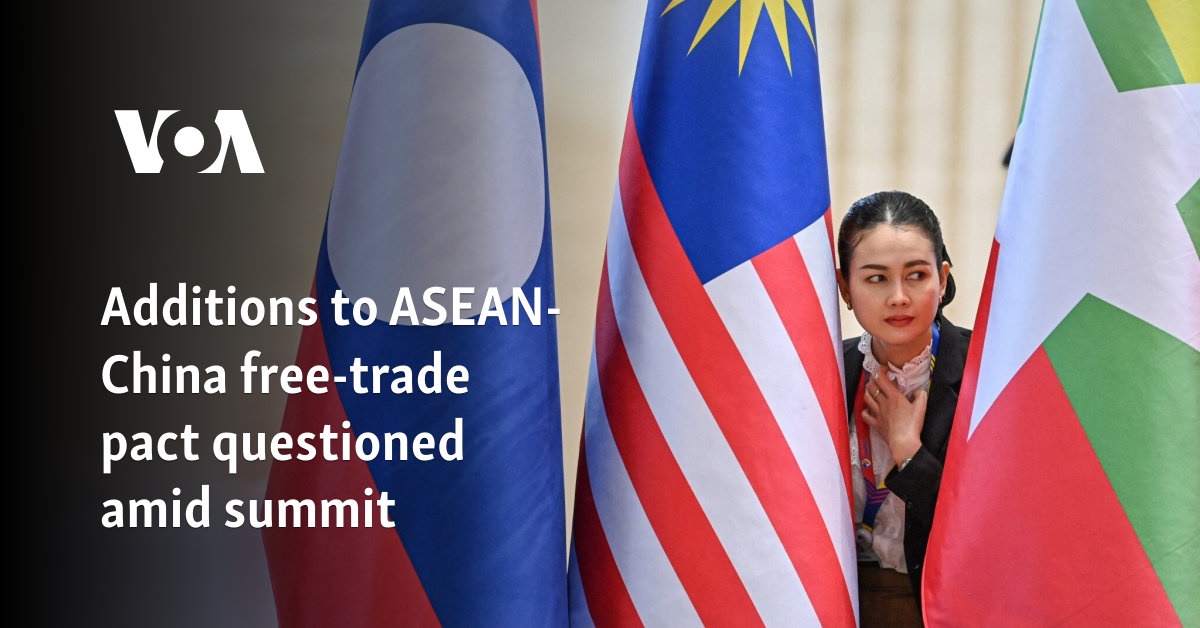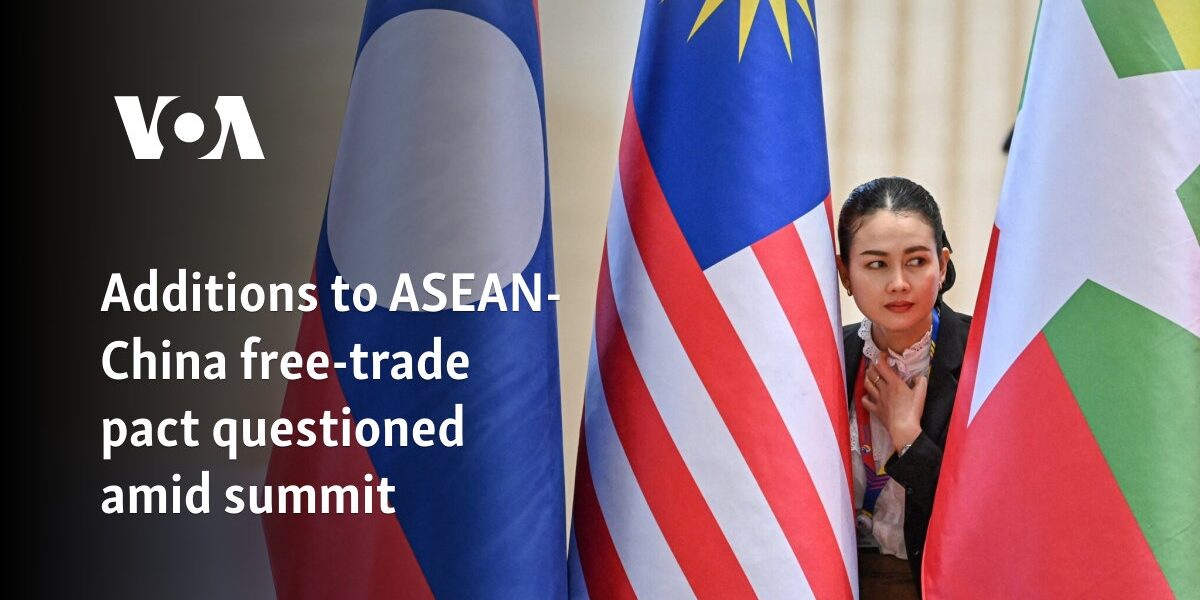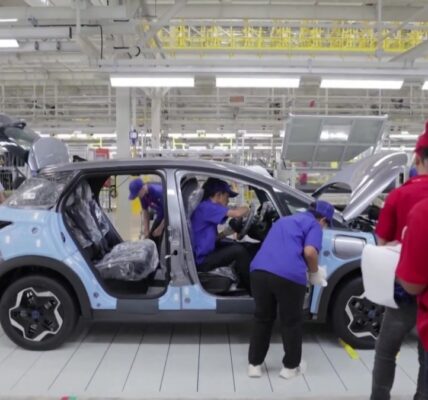
TAIPEI, TAIWAN —
As Laos hosts this year’s summit of the Association of Southeast Asian Nations, Beijing is calling for additions to its free-trade agreement with the regional forum that focus on smart cities, 5G, artificial intelligence and e-commerce.
Ahead of the ASEAN summit, which began Sunday and ends Friday, Chinese state media have stepped up efforts to promote the benefits of what they call an upgrade to the China-ASEAN Free Trade Area, or CAFTA, agreement.
Analysts point out that the two sides have not reached agreement on what’s being called “CAFTA 3.0,” and that it remains to be seen whether including China’s electric vehicles and e-commerce would benefit Southeast Asian industries that are struggling to compete with their Chinese counterparts.
“The establishment of a free-trade demonstration zone is actually nothing more than the hope that things can be sold into China,” Ming-Fang Tsai, a professor in the Department of Industrial Economics at Taiwan’s Tamkang University, told VOA.
However, he said the Chinese market is facing a lack of domestic demand and overproduction, leading to price competition.
“So, is the FTA 3.0 really an upgrade? Actually, it is a big question mark,” he said by email.
Nevertheless, some specific areas in the 3.0 agreement still attract the attention of experts, including its focus on the EV industry.
Although ASEAN is also actively developing an EV industry, He Jiangbing, a China-based economist and finance commentator, told VOA if China’s major EV manufacturers pour into Southeast Asia through changes in the agreement, it would likely have a huge impact on the local automobile industries.
“China’s mainland started relatively early in new-energy vehicles and has developed rapidly for 10 years. But the automotive industry in ASEAN is relatively weak. If China’s new-energy vehicles are sold in ASEAN, it will be difficult for Southeast Asian [traditional] car companies to resist,” He said.
Southeast Asia’s own automobile industry will be greatly affected or cease to exist, He said.
But Lu Xi, a senior lecturer at the Lee Kuan Yew School of Public Policy at the National University of Singapore, told VOA that most of China’s EVs are not getting into Southeast Asia through exports but through production-line transfer, similar to joint ventures, so a price war should not cause a negative impact.
“With the transfer of [China’s EV] manufacturing industry chain, the economic structure of Southeast Asia will undergo a huge transformation,” Lu said by email. “Depending on the current political and economic situation between China and the US, Southeast Asia itself also has a very broad local market and a very good young population structure, so on the whole, the Southeast Asian market should be one of the important engines of economic growth in the whole region in the future.”
Tsai noted that Chinese manufacturers will set up factories in Southeast Asia to avoid the “Made in China” label and restrictions on Chinese products.
“U.S. controls on technology may affect the components of EVs in the future,” he said, “which brings great pressure to Chinese manufacturers.”
In addition to EVs, the 3.0 agreement also focuses on smart cities, 5G, artificial intelligence and e-commerce.
Analysts say China’s e-commerce is already having a negative impact on the region as orders of cheaper Chinese imports and knockoffs are flooding Southeast Asia. Half of the ceramic factories in Thailand’s northern Lampang province have closed, and Indonesian textile workers are facing mass layoffs, the South China Morning Post and the Bangkok Post reported.
“In the face of the massive entry of the [Chinese] e-commerce, frankly speaking, these Southeast Asian countries are relatively uncompetitive,” said Tsai. “Because first, [they] will not be able to compete with China in marketing and sales. Second, [China’s] own products are cheaper.
“If my entire e-commerce system is better than yours,” Tsai said, “and my products are not more expensive than yours, then how can you compete with me?”
Nonetheless, in a September speech for the Regional Comprehensive Economic Partnership, or RCEP, in Nanning, China, ASEAN Secretary-General Kao Kim Hourn called on businesses to take full advantage of the partnership as they move toward the changes.
He touted the RCEP, the world’s largest trade bloc, covering nearly 30% of global gross domestic product at $29 trillion and 2.3 billion people across the Asia Pacific region.
“ASEAN’s multidirectional economic relations have been a major driver behind the use of RCEP,” said Hourn, according to a written statement. “China, for example, has remained ASEAN’s largest trading partner for the past 15 years and has also climbed from the 5th largest source of FDI to ASEAN in 2022 to the 3rd largest in 2023. With both RCEP and ACFTA 3.0 in place, I am confident that trade and investment between ASEAN, China, and the rest of the RCEP partners will continue to flourish for the benefit of the people in this wider region.”
ASEAN calls the free-trade agreement ACFTA; Beijing refers to it as CAFTA.
The agreement was established by China and ASEAN in 2009, and the ASEAN-China Summit announced the launch of negotiations for the changes in November 2022.
VOA’s Adrianna Zhang contributed to this report.
Source: voanews.com




